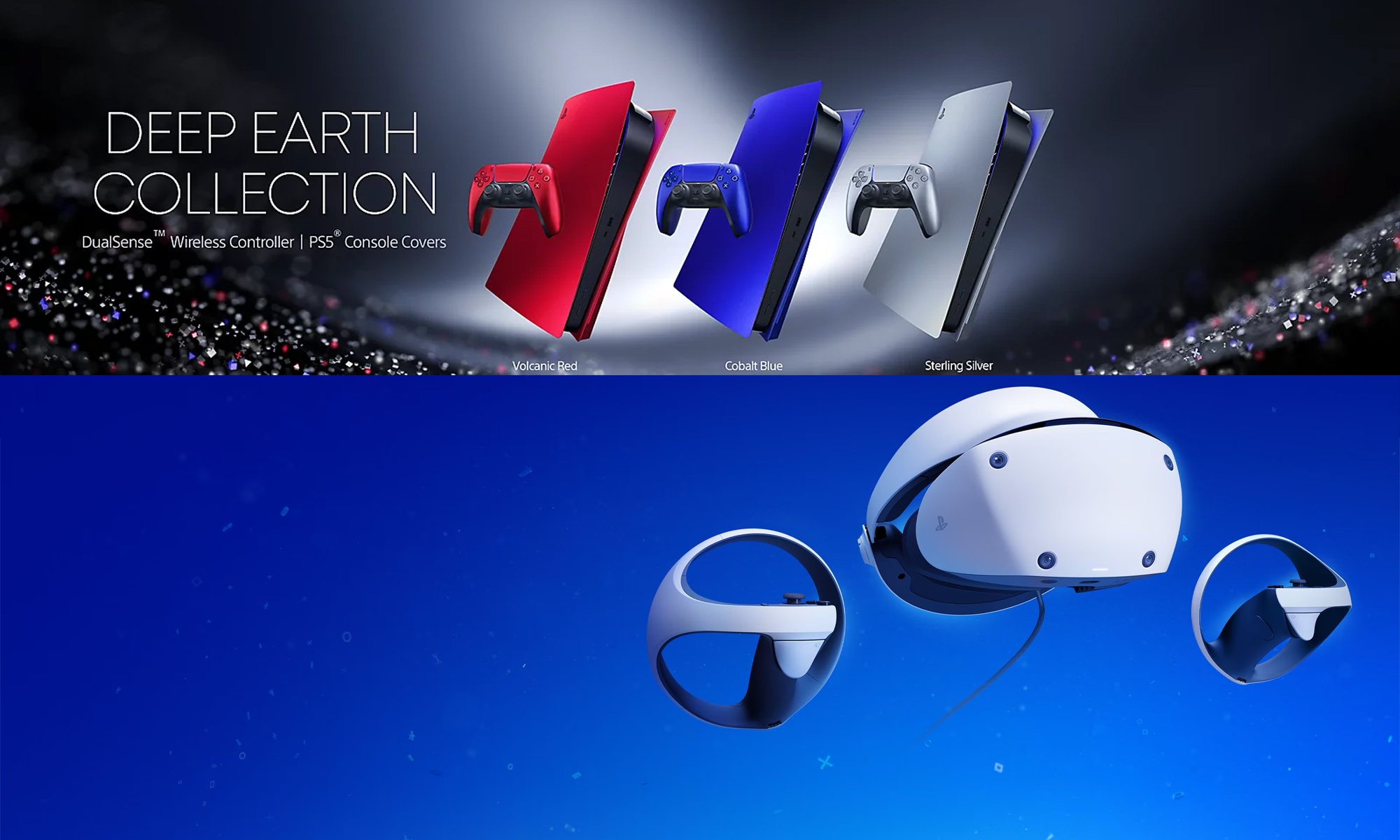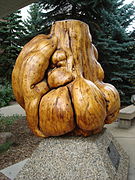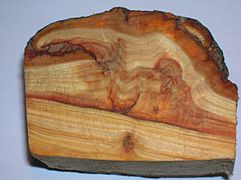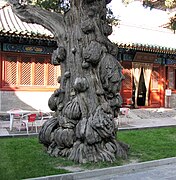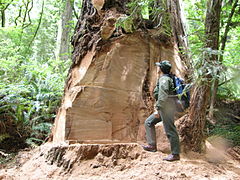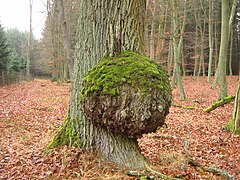Liverpool theme by Gerhard
Download: Liverpool.p3t

(3 backgrounds, custom backgrounds SD only)
Liverpool is a city and metropolitan borough in Merseyside, northwest England. It had a population of 496,770 in 2022.[3] The city is located on the eastern side of the Mersey Estuary, adjacent to the Irish Sea, and is approximately 178 miles (286 km) from London. Liverpool is the fifth largest city in the United Kingdom, the largest settlement in Merseyside and part of the Liverpool City Region, a combined authority with a population of over 1.5 million.[5]
Liverpool was established as a borough in 1207 in the county of Lancashire and became a significant town in the late seventeenth century, when the port at nearby Chester began to silt up. The Port of Liverpool became heavily involved in the Atlantic slave trade, with the first slave ship departing from the town in 1699. The port also imported much of the cotton required by the neighbouring Lancashire textile mills, and became a major departure point for English and Irish emigrants to North America. In the 19th century, Liverpool rose to global economic importance at the forefront of the Industrial Revolution and built the first intercity railway, the first non-combustible warehouse system (the Royal Albert Dock), and a pioneering elevated electrical railway; it was granted city status in 1880. In common with many British cities, the city entered a period of decline in the mid-20th century, though it experienced regeneration after its selection as the European Capital of Culture in 2008.[6][7]
Liverpool's modern economy is diversified. It has sectors such as tourism, culture, maritime, hospitality, healthcare, life sciences, advanced manufacturing, creative, and digital.[8][9][10] The city contains the second-highest number of national museums, listed buildings, and listed parks in the UK, with only London having more.[11] The city is often used as a filming location due to its architecture, and was one of the top five cities in the UK most visited by overseas tourists in 2022.[12] It is England's only UNESCO City of Music and has produced many notable musical acts, most notably the Beatles, while musicians from the city have released more UK number one hit singles than anywhere else in the world.[13] It has also produced many actors, artists, poets, and writers. In sports, the city is known as the home of Premier League football teams Everton FC and Liverpool FC. The city's port was the fourth-largest in the UK in 2023,[14] and numerous shipping and freight lines have headquarters and offices there.
Residents of Liverpool are often called "Scousers" in reference to scouse, a local stew made popular by sailors in the city, and the name is also applied to the distinct local accent. The city has a culturally and ethnically diverse population and historically attracted many immigrants, especially from Ireland, Scandinavia, and Wales. It is the home of the earliest black community in the UK, the earliest Chinese community in Europe, and the first mosque in England.[15]
Toponymy[edit]
The name comes from the Old English lifer, meaning thick or muddy water, and pōl, meaning a pool or creek, and is first recorded around 1190 as Liuerpul.[16][17] According to the Cambridge Dictionary of English Place-Names, "The original reference was to a pool or tidal creek now filled up into which two streams drained".[18] The place appearing as Leyrpole, in a legal record of 1418, may also refer to Liverpool.[19] Other origins of the name have been suggested, including "elverpool", a reference to the large number of eels in the Mersey.[20] The adjective "Liverpudlian" was first recorded in 1833.[17]
Although the Old English origin of the name Liverpool is beyond dispute, claims are sometimes made that the name Liverpool is of Welsh origin, but these are without foundation. The Welsh name for Liverpool is Lerpwl, from a former English local form Leerpool. This is a reduction of the form "Leverpool" with the loss of the intervocalic [v] (seen in other English names and words e.g. Daventry (Northamptonshire) > Danetry, never-do-well > ne’er-do-well).
In the 19th century, some Welsh publications used the name "Lle'r Pwll" ("(the) place (of) the pool"), a reinterpretation of Lerpwl, probably in the belief that "Lle'r Pwll" was the original form.
Another name, which is widely known even today, is Llynlleifiad, again a 19th-century coining. "Llyn" is pool, but "lleifiad" has no obvious meaning. G. Melville Richards (1910–1973), a pioneer of scientific toponymy in Wales, in "Place Names of North Wales",[21] does not attempt to explain it beyond noting that "lleifiad" is used as a Welsh equivalent of "Liver".
A derivative form of a learned borrowing into Welsh (*llaf) of Latin lāma (slough, bog, fen) to give "lleifiad" is possible, but unproven.
History[edit]

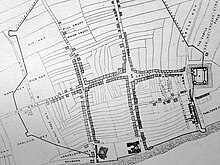

Early history[edit]
In the Middle Ages, Liverpool existed firstly as farmland within the West Derby Hundred[22] before growing in to a small town of farmers, fishermen and tradesmen and tactical army base for King John of England. The town was planned with its own castle, although due to outbreaks of disease and its subordinance to the nearby Roman port of Chester, the town's growth and prosperity stagnated until the late 17th and early 18th centuries. Substantial growth took place in the mid-late 18th century when the town became the most heavily involved European port in the Atlantic slave trade.[23]
King John's letters patent of 1207 announced the foundation of the borough of Liverpool (then spelt as Liuerpul). There is no evidence that the place had previously been a centre of any trade. The creation of the borough was probably due to King John deciding it would be a convenient place to embark men and supplies for his Irish campaigns, in particular John's Irish campaign of 1209.[24][25] The original street plan of Liverpool is said to have been designed by King John near the same time it was granted a royal charter, making it a borough. The original seven streets were laid out in the shape of a double cross: Bank Street (now Water Street), Castle Street, Chapel Street, Dale Street, Juggler Street (now High Street), Moor Street (now Tithebarn Street) and Whiteacre Street (now Old Hall Street).[25] Liverpool Castle was built before 1235, it survived until it was demolished in the 1720s.[26] By the middle of the 16th century, the population was still around 600, although this was likely to have fallen from an earlier peak of 1000 people due to slow trade and the effects of the plague.[27][28][29]
In the 17th century, there was slow progress in trade and population growth. Battles for control of the town were waged during the English Civil War, including a brief siege in 1644.[30] In 1699, the same year as its first recorded slave ship, Liverpool Merchant, set sail for Africa,[31] Liverpool was made a parish by Act of Parliament. But arguably, the legislation of 1695 that reformed the Liverpool council was of more significance to its subsequent development.[32] Since Roman times, the nearby city of Chester on the River Dee had been the region's principal port on the Irish Sea. However, as the Dee began to silt up, maritime trade from Chester became increasingly difficult and shifted towards Liverpool on the neighbouring River Mersey. The first of the Liverpool docks was constructed in 1715, and the system of docks gradually grew into a large interconnected system.[33]
As trade from the West Indies, including sugar, surpassed that of Ireland and Europe, and as the River Dee continued to silt up, Liverpool began to grow with increasing rapidity. The first commercial wet dock was built in Liverpool in 1715.[34][35] Substantial profits from the slave trade and tobacco helped the town to prosper and rapidly grow, although several prominent local men, including William Rathbone, William Roscoe and Edward Rushton, were at the forefront of the local abolitionist movement.[36]
19th century[edit]


The 19th century saw Liverpool rise to global economic importance. Pioneering, world first, technology and civic facilities launched in the city to serve the accelerating population which was fuelled by an influx of ethnic and religious communities from all around the world.
By the start of the 19th century, a large volume of trade was passing through Liverpool, and the construction of major buildings reflected this wealth. In 1830, Liverpool and Manchester became the first cities to have an intercity rail link, through the
Burl theme by Christoforo Download: Burl.p3t A burl (American English) or burr (British English) is a tree growth in which the grain has grown in a deformed manner. It is commonly found in the form of a rounded outgrowth on a tree trunk or branch that is filled with small knots from dormant buds. Burl formation is typically a result of some form of stress such as an injury or a viral or fungal infection.
Burls yield a very peculiar and highly figured wood sought after in woodworking, and some items may reach high prices on the wood market. Poaching of burl specimens and damaging the trees in the process poses a problem in some areas.
A burl results from a tree undergoing some form of stress. It may be caused by an injury, virus or fungus.[1] Most burls grow beneath the ground, attached to the roots as a type of malignancy that is generally not discovered until the tree dies or falls over. Such burls sometimes appear as groups of bulbous protrusions connected by a system of rope-like roots. Almost all burl wood is covered by bark, even if it is underground. Insect infestation and certain types of mold infestation are the most common causes of this condition.
In some tree species, burls can grow to great size. The largest, at 26 ft (8 m), occur in coast redwoods (Sequoia sempervirens) and can engirdle the entire trunk; when moisture is present, these burls can grow new redwood trees. The world's second-largest burls can be found in Port McNeill, British Columbia. One of the largest burls known was found around 1984 in the small town of Tamworth, New South Wales. It stands 6.4 ft (2.0 m) tall, with an odd shape resembling a trombone. In January 2009, this burl was controversially removed from its original location, and relocated to a public school in the central New South Wales city of Dubbo.
Burls yield a very peculiar and highly figured wood, prized for its beauty and rarity. It is sought after by furniture makers, artists, and wood sculptors. There are a number of well-known types of burls (each from a particular species); these are highly valued and sliced into veneers for furniture, inlay in doors, picture frames, household objects, automobile interior paneling and trim, musical instruments, and woodturning. It is also used for car dashboards.
The prized "burr maple" is not a species of a maple, but wood from a maple's burl (burr).
The famous birdseye maple of the sugar maple (Acer saccharum) superficially resembles burr maple, but it is something else entirely.
Burl wood is very hard to work with hand tools or on a lathe, because its grain is twisted and interlocked, causing it to chip and shatter unpredictably. This "wild grain" makes burl wood extremely dense and resistant to splitting, which made it valued for bowls, mallets, mauls and "beetles" or "beadles" for hammering chisels and driving wooden pegs.[2]
Because of the value of burls, ancient redwoods in national parks in the Western United States have recently been poached by thieves for their burls, including at Redwood National and State Parks.[3] Poachers often cut off the burls from the sides of the trunks using chainsaws, which exposes the tree to infection and disease, or fell the entire tree to steal burls higher up.[3] Because of the risk of poaching, Jeff Denny, the state park's redwood coast sector supervisor, encourages those buying burl to inquire where it came from and to ensure it was obtained legally. Legal acquisition methods for burl include trees from private land cleared for new development and from lumber companies with salvage permits.[3]
The Hulk theme by crazystage15 Download: Hulk.p3t
As Hulk/Joe Fixit:
The Hulk is a superhero appearing in American comic books published by Marvel Comics. Created by writer Stan Lee and artist Jack Kirby, the character first appeared in the debut issue of The Incredible Hulk (May 1962). In his comic book appearances, the character, who has dissociative identity disorder (DID), is primarily represented by the alter ego Hulk, a green-skinned, hulking and muscular humanoid possessing a limitless degree of physical strength, and the alter ego Dr. Robert Bruce Banner, a physically weak, socially withdrawn, and emotionally reserved physicist, both of whom typically resent each other.
Following his accidental exposure to gamma rays while saving the life of Rick Jones during the detonation of an experimental bomb, Banner is physically transformed into the Hulk when subjected to emotional stress, at or against his will. This transformation often leads to destructive rampages and to conflicts that complicate Banner's civilian life. The Hulk's level of strength is normally conveyed as proportionate to his level of anger. Commonly portrayed as a raging savage, the Hulk has been represented with other alter egos, from a mindless, destructive force (War), to a brilliant warrior (World-Breaker), a self-hating protector (the Devil/Immortal), a genius scientist in his own right (Doc Green), and a gangster (Joe Fixit).
Despite both Hulk and Banner's desire for solitude, the character has a large supporting cast. This includes Banner's love interest Betty Ross, his best friend Rick Jones, his cousin She-Hulk, and therapist and ally Doc Samson. In addition, the Hulk alter ego has many key supporting characters, like his co-founders of the superhero team the Avengers, his queen Caiera, fellow warriors Korg and Miek, and sons Skaar and Hiro-Kala. However, his uncontrollable power has brought him into conflict with his fellow heroes and others. Despite this, he tries his best to do what's right while battling villains such as the Leader, the Abomination, the Absorbing Man, and more.
Lee stated that the Hulk's creation was inspired by a combination of Frankenstein and Dr. Jekyll and Mr. Hyde.[4] Although the Hulk's coloration has varied throughout the character's publication history, the most usual color is green.
One of the most iconic characters in popular culture,[5][6] the character has appeared on a variety of merchandise, such as clothing and collectable items, inspired real-world structures (such as theme park attractions), and been referenced in a number of media. Banner and the Hulk have been adapted in live-action, animated, and video game incarnations. The character was first played in live-action by Bill Bixby and Lou Ferrigno in the 1978 television series The Incredible Hulk and its subsequent television films The Incredible Hulk Returns (1988), The Trial of the Incredible Hulk (1989), and The Death of the Incredible Hulk (1990). In film, the character was played by Eric Bana in Hulk (2003). In the Marvel Cinematic Universe (MCU), the character was first portrayed by Edward Norton in the film The Incredible Hulk (2008) and then by Mark Ruffalo in later appearances in the franchise.
The Hulk first appeared in The Incredible Hulk #1 (cover dated May 1962), written by writer-editor Stan Lee, penciled and co-plotted by Jack Kirby,[7][8] and inked by Paul Reinman. Lee cites influence from Frankenstein[9] and Dr. Jekyll and Mr. Hyde in the Hulk's creation:
It was patently apparent that [the monstrous character the] Thing was the most popular character in [Marvel's recently created superhero team the] Fantastic Four. ... For a long time, I'd been aware of the fact that people were more likely to favor someone who was less than perfect. ... It's a safe bet that you remember Quasimodo, but how easily can you name any of the heroic, handsomer, more glamorous characters in The Hunchback of Notre Dame? And then there's Frankenstein ... I've always had a soft spot in my heart for the Frankenstein monster. No one could ever convince me that he was the bad guy. ... He never wanted to hurt anyone; he merely groped his torturous way through a second life trying to defend himself, trying to come to terms with those who sought to destroy him. ... I decided I might as well borrow from Dr. Jekyll and Mr. Hyde as well—our protagonist would constantly change from his normal identity to his superhuman alter ego and back again.[10] Kirby also stated the Frankenstein inspiration stating, "I did a story called "The Hulk"– a small feature, and it was quite different from the Hulk that we know. But I felt that the Hulk had possibilities, and I took this little character from the small feature and I transformed it into the Hulk that we know today.
Of course, I was experimenting with it. I thought the Hulk might be a good-looking Frankenstein. I felt there's a Frankenstein in all of us; I’ve seen it demonstrated. And I felt that the Hulk had the element of truth in it, and anything to me with the element of truth is valid and the reader relates to that. And if you dramatize it, the reader will enjoy it."[11] Kirby also commented upon his influences in drawing the character, and recalled the inspiration of witnessing the hysterical strength of a mother lifting a car off her trapped child.[12][13][14]
Lee has also compared Hulk to the Golem of Jewish mythology.[9] In The Science of Superheroes, Gresh and Weinberg see the Hulk as a reaction to the Cold War[15] and the threat of nuclear attack, an interpretation shared by Weinstein in Up, Up and Oy Vey.[9] This interpretation corresponds with other popularized fictional media created during this time period, which took advantage of the prevailing sense among Americans that nuclear power could produce monsters and mutants.[16]
In the debut, Lee chose grey for the Hulk because he wanted a color that did not suggest any particular ethnic group.[17] Colorist Stan Goldberg, however, had problems with the grey coloring, resulting in different shades of grey, and even green, in the issue. After seeing the first published issue, Lee chose to change the skin color to green.[18] Green was used in retellings of the origin, with even reprints of the original story being recolored for the next two decades, until The Incredible Hulk vol. 2, #302 (December 1984) reintroduced the grey Hulk in flashbacks set close to the origin story. An exception is the early trade paperback, Origins of Marvel Comics, from 1974, which explains the difficulties in keeping the grey color consistent in a Stan Lee-written prologue, and reprints the origin story keeping the grey coloration. Since December 1984, reprints of the first issue have displayed the original grey coloring, with the fictional canon specifying that the Hulk's skin had initially been grey.
Lee gave the Hulk's alter ego the alliterative name "Bruce Banner" because he found he had less difficulty remembering alliterative names. Despite this, in later stories he misremembered the character's name and referred to him as "Bob Banner", an error which readers quickly picked up on.[19] The discrepancy was resolved by giving the character the official full name "Robert Bruce Banner."[1]
The Hulk got his name from a comic book character named The Heap who was a large green swamp monster.[20]
The Hulk's original series was canceled with issue #6 (March 1963). Lee had written each story, with Kirby penciling the first five issues and Steve Ditko penciling and inking the sixth. The character immediately guest-starred in The Fantastic Four #12 (March 1963), and months later became a founding member of the superhero team the Avengers, appearing in the first two issues of the team's eponymous series (Sept. and Nov. 1963), and returning as an antagonist in issue #3 and as an ally in #5 (Jan.–May 1964). He then guest-starred in Fantastic Four #25–26 (April–May 1964), which revealed Banner's full name as Robert Bruce Banner, and The Amazing Spider-Man #14 (July 1964).[21]
Around this time, co-creator Kirby received a letter from a college dormitory stating the Hulk had been chosen as its official mascot.[9] Kirby and Lee realized their character had found an audience in college-age readers.
A year and a half after The Incredible Hulk was canceled, the Hulk became one of two features in Tales to Astonish, beginning in issue #60 (Oct. 1964).[22]
This new Hulk feature was initially scripted by Lee, with pencils by Steve Ditko and inks by George Roussos. Other artists later in this run included Jack Kirby (#68–87, June 1965 – Oct. 1966); Gil Kane (credited as "Scott Edwards", #76, (Feb. 1966)); Bill Everett (#78–84, April–Oct. 1966); John Buscema (#85–87); and Marie Severin. The Tales to Astonish run introduced the super-villains the Leader,[4] who would become the Hulk's nemesis, and the Abomination, another gamma-irradiated being.[4] Marie Severin finished out the Hulk's run in Tales to Astonish. Beginning with issue #102 (April 1968) the book was retitled The Incredible Hulk vol. 2,[23] and ran until 1999, when Marvel canceled the series and launched Hulk #1. Marvel filed for a trademark for "The Incredible Hulk" in 1967, and the United States Patent and Trademark Office issued the registration in 1970.[24]
Len Wein wrote the series from 1974 through 1978, working first with Herb Trimpe, then, as of issue #194 (December 1975), with Sal Buscema, who was the regular artist for ten years.[25] Issues #180–181 (Oct.–Nov. 1974) introduced Wolverine as an antagonist,[26] who would go on to become one of Marvel Comics' most popular characters. In 1977, Marvel launched a second title, The Rampaging Hulk, a black-and-white comics magazine.[4] This was originally conceived as a flashback series, set between the end of his original, short-lived solo title and the beginning of his feature in Tales to Astonish.[27] After nine issues, the magazine was retitled The Hulk! and printed in color.[28]
In 1977, two Hulk television films were aired to strong ratings, leading to an Incredible Hulk TV series that aired from 1978 to 1982. A huge ratings success, the series introduced the popular Hulk catchphrase "Don't make me angry. You wouldn't like me when I'm angry", and broadened the character's popularity from a niche comic book readership into the mainstream consciousness.[29]
Bill Mantlo became the series' writer for five years beginning with issue #245 (March 1980). Mantlo's "Crossroads of Eternity" stories (#300–313 (Oct. 1984 – Nov. 1985)) explored the idea that Banner had suffered child abuse. Later Hulk writers Peter David and Greg Pak have called these stories an influence on their approaches to the character.[30][31] Mantlo left the series for Alpha Flight and that series' writer John Byrne took over The Incredible Hulk.[32] The final issue of Byrne's six issue run featured the wedding of Bruce Banner and Betty Ross.[33] Writer Peter David began a 12-year run with issue #331 (May 1987). He returned to the Roger Stern and Mantlo abuse storylines, expanding the damage caused, and depicting Banner as suffering dissociative identity disorder (DID).[4]
In 1998, David killed off Banner's long-time love Betty Ross. Marvel executives used Ross' death as an opportunity to pursue the return of the Savage Hulk. David disagreed, leading to his parting ways with Marvel.[34] Also in 1998, Marvel relaunched The Rampaging Hulk as a standard comic book rather than as a comics magazine.[4] The Incredible Hulk was again cancelled with issue #474 of its second volume in March 1999 and was replaced with a new series, Hulk the following month, with returning writer Byrne and art by Ron Garney.[35][36] New series writer Paul Jenkins developed the Hulk's multiple dissociative identities,[37] and his run was followed by Bruce Jones[38] with his run featuring Banner being pursued by a secret conspiracy and aided by the mysterious Mr. Blue. Jones appended his 43-issue Incredible Hulk run with the limited series Hulk/Thing: Hard Knocks #1–4 (Nov. 2004 – Feb. 2005), which Marvel published after putting the ongoing series on hiatus. Peter David, who had initially signed a contract for the six-issue Tempest Fugit limited series, returned as writer when it was decided to make that story the first five parts of the revived (vol. 3).[39] After a four-part tie-in to the "House of M" storyline and a one-issue epilogue, David left the series once more, citing the need to do non-Hulk work for the sake of his career.[40]
Writer Greg Pak took over the series in 2006, leading the Hulk through several crossover storylines including "Planet Hulk" and "World War Hulk", which left the Hulk temporarily incapacitated and replaced as the series' title character by the demigod Hercules in the retitled The Incredible Hercules (Feb. 2008). The Hulk returned periodically in Hulk, which then starred the new Red Hulk.[41] In September 2009, The Incredible Hulk was relaunched as The Incredible Hulk (vol. 2) #600.[41] The series was retitled The Incredible Hulks with issue #612 (Nov. 2010) to encompass the Hulk's expanded family, and ran until issue #635 (Oct. 2011) when it was replaced with The Incredible Hulk (vol. 3) (15 issues, Dec. 2011 – Dec. 2012) written by Jason Aaron with art by Marc Silvestri.[42] As part of Marvel's 2012 Marvel NOW! relaunch, a series called Indestructible Hulk (Nov. 2012) debuted under the creative team of Mark Waid and Leinil Yu.[43] This series was replaced in 2014 with The Hulk by Waid and artist Mark Bagley.[44]
A new series titled The Immortal Hulk, written by Al Ewing and drawn by Joe Bennett, was launched in 2018 and ran for 50 issues. The series had a spin-off one-shot Immortal She-Hulk[45] and a spin-off series about Gamma Flight in June 2021.[46]
In November 2021, Donny Cates became the new writer of Hulk, with Ryan Ottley joining as artist. In May 2022, the series did a crossover with the Thor series, also written by Cates, entitled Hulk vs Thor: Banner of War. The series ran for 14 issues, with Ottley taking over as writer for the last 4 issues afters Cates left the book.[47][48]
In March 2023, it was announced that a new volume of The Incredible Hulk would launch in June 2023, written by Philip Kennedy Johnson and drawn by Nic Klein.[49]
Robert Bruce Banner's psyche was profoundly affected by his troubled childhood, in which his father, Brian Banner, regarded him as a monster due to his seemingly unnatural intellect from a young age.[50] These experiences caused Bruce to develop a dissociative identity disorder and repress his negative emotions as a coping mechanism. After Brian killed Bruce's mother in a fit of rage,[51] Bruce lived with several relatives up until his high school years, when his intelligence caught the attention of the United States Army.[52] Banner was recruited to develop nuclear weapons under the authority of General Thaddeus "Thunderbolt" Ross, and soon developed a relationship with the General's daughter Betty Ross.[53]
During the experimental detonation of a gamma bomb, Banner saves teenager Rick Jones, who was dared onto the testing field; Banner pushes Jones into a trench to save him, but is hit with the blast, absorbing massive amounts of gamma radiation. He awakens later seemingly unscathed, but he begins transforming into a powerful and destructive creature upon nightfall, which a pursuing soldier describes as a "hulk".[53] Banner's attempts to cure himself of these transformations alter their conditions, causing Banner to transform as a response to rage or fear.[54] The Hulk is a founding member of the Avengers,[55] but quickly leaves the group due to their distrust of him.[56] Banner maintains the secret of his dual identity with Rick's aid, but Rick reveals his secret following his assumed death, forcing Banner to become a fugitive.[57]
Psychiatrist Doc Samson captures the Hulk and manages to physically separate Banner and the Hulk,[58] allowing Banner to marry Betty.[59] However, Banner and the Hulk's molecular structure destabilized and threatened to kill them, requiring Samson to reunite them with the aid of Vision.[60] Samson is later able to merge elements of Banner's fractured psyche to create Professor Hulk, an intelligent but egocentric variation of the Hulk.[51] Professor Hulk soon becomes a key member of the Pantheon, a secretive organization of superpowered individuals.[61][62] His tenure with the organization brings him into conflict with a tyrannical alternate future version of himself called the Maestro, who rules over a world where many heroes are dead.[63] The Professor Hulk construct ultimately proves unstable, and Banner's psyche eventually splinters once more.
In "Planet Hulk", the Illuminati decide the Hulk is too dangerous to remain on Earth and send him away by rocket ship which crashes on Planet Sakaar. The Hulk finds allies in the Warbound and marries alien queen Caiera, a relationship that bears him two sons: Skaar and Hiro-Kala.[64] After the Illuminati's ship explodes and kills Caiera, the Hulk returns to Earth with his superhero group Warbound and declares war on the planet in "World War Hulk".[65] However, after learning that Miek, one of the Warbound, had actually been responsible for the destruction, the Hulk allows himself to be defeated, with Banner subsequently redeeming himself as a hero as he works with and against the new Red Hulk to defeat the new supervillain team the Intelligencia.[66]
Later, the Hulk turns to Doctor Doom to physically separate himself and Banner, with Doom surgically extracting the elements of the Hulk's brain uniquely belonging to Banner and inserting them into a clone body.[67] Banner eventually re-combines with the Hulk when his cloned body is destroyed in an attempt to recreate his original transformation.[68] Following this, Bruce willingly joins the spy organization S.H.I.E.L.D., allowing them to use the Hulk as a weapon in exchange for providing him with the means and funding to create a lasting legacy for himself.[69] When Banner is shot in the head by an assassin, Tony Stark saves him with a variant of the Extremis virus.[70] This procedure creates a new intelligent persona named Doc Green, who concludes that the world is in danger by Gamma Mutates[a] and thus need to be depowered. He creates a cure and depowers A-Bomb, Skaar and Red Hulk. Eventually, Doc Green's intellect fades and his normal Hulk form is restored.[71]
When the vision of the Inhuman Ulysses shows a rampaging Hulk standing over the corpses of many superheroes,[72] Banner gives Hawkeye special arrows capable of killing him during a transformation, which Hawkeye accomplishes.[73] The Hulk was first revived by the Hand,[74] then by Hydra,[75] and finally by the Challenger for a contest against the Grandmaster.[76]
Like other long-lived characters, the Hulk's character and cultural interpretations have changed with time, adding or modifying character traits. The Hulk is typically seen as a hulking man with green skin, hair, and eyes, wearing only a pair of torn purple pants that survive his physical transformation as the character progressed. As Bruce Banner, the character is about 5 ft 9 in (1.75 m) tall and weighs 128 lbs (58.05 kg), but when transformed into the Hulk, the character stands between 7 and 8 ft (2.13 - 2.43 m) tall and weighs between 1,040 and 1,400 lbs (471.73 - 635.02 kg). The Gray Hulk stands 6 ft 6 in (1.98 m) tall and weighs 900 lbs (408.23 kg); the Merged Hulk stands 7 ft 6 in (2.28 m) tall and weighs 1,150 lbs (521.63 kg); the Green Scar stands 8 ft 8 in (2.64 m) tall and weighs 2,400 lbs (1.08 ton).[77] The Immortal Hulk is roughly the same size as Sasquatch, standing around 9 or 10 ft (2.74 / 3.04 m) tall and weighing roughly 2,000 lbs (907.18 kg). Following his debut, Banner's transformations were triggered at nightfall, turning him into a grey-skinned Hulk. In Incredible Hulk #2, the Hulk started to appear with green skin,[78] and in Avengers #3 (1963) Banner realized that his transformations were now triggered by surges of adrenaline in response to feelings of fear, pain or anger.[79] Incredible Hulk #227 (1978) established that the Hulk's separate identity was not due to the mutation affecting his brain, but because Banner was suffering from dissociative identity disorder, with the savage Green Hulk representing Banner's repressed childhood rage and aggression,[80] and the Grey Hulk representing Banner's repressed selfish desires and urges.[81]
During his decades of publication, Banner has been portrayed differently, but common themes persist. Banner, a physicist who earned his Ph.D. in nuclear physics from the California Institute of Technology (Caltech), is sarcastic and seemingly very self-assured when he first appears in Incredible Hulk #1, but is also emotionally withdrawn.[4] Banner designed the gamma bomb that caused his affliction, and the ironic twist of his self-inflicted fate has been one of the most persistent common themes.[9] Arie Kaplan describes the character thus: "Robert Bruce Banner lives in a constant state of panic, always wary that the monster inside him will erupt, and therefore he cannot form meaningful bonds with anyone."[82] As a child, Banner's father Brian often got mad and physically abused both Banner and his mother, creating the psychological complex of fear, anger, and the fear of anger and the destruction it can cause that underlies the character. Banner has been shown to be emotionally repressed, but capable of deep love for Betty Ross, and for solving problems posed to him. Under the writing of Paul Jenkins, Banner was shown to be a capable fugitive, applying deductive reasoning and observation to figure out the events transpiring around him. On the occasions that Banner controlled the Hulk's body, he applied principles of physics to problems and challenges and used deductive reasoning. It was shown after his ability to turn into the Hulk was taken away by the red Hulk that Banner has been extremely versatile as well as cunning when dealing with the many situations that followed. When he was briefly separated from the Hulk by Doom, Banner became criminally insane, driven by his desire to regain the power of the Hulk, but once the two recombined he came to accept that he was a better person with the Hulk to provide something for him to focus on controlling rather than allowing his intellect to run without restraint against the world.[83]
The traditional Hulk, often called "Savage Hulk", was originally shown as grey and average in intelligence. He roamed aimlessly and became annoyed at "puny" humans who took him for a dangerous monster. Shortly after becoming the Hulk, his transformation continued turning him green, coinciding with him beginning to display primitive speech.[78] By Incredible Hulk #4, radiation treatments gave Banner's mind complete control of the Hulk's body. While Banner relished his indestructibility and power, he was quick to anger and more aggressive in his Hulk form. He became known as a hero alongside the Avengers, but his increasing paranoia caused him to leave the group. He was convinced that he would never be trusted.[79]
Originally, the Hulk was shown as simple-minded and quick to anger.[84] The Hulk generally divorces his identity from Banner's, decrying Banner as "puny Banner."[85] From his earliest stories, the Hulk has been concerned with finding sanctuary and quiet.[9] He is often shown to quickly react emotionally to situations. Grest and Weinberg call Hulk the "dark, primordial side of Banner's psyche."[15] Even in the earliest appearances, Hulk spoke in the third person. Hulk retains a modest intelligence, thinking and talking in full sentences. Lee even gives the Hulk expository dialogue in issue #6, allowing readers to learn just what capabilities Hulk has, when the Hulk says, "But these muscles ain't just for show! All I gotta do is spring up and just keep goin'!" In the 1970s, Hulk was shown as more prone to anger and rage, and less talkative. Writers played with the nature of his transformations,[86] briefly giving Banner control over the change, and the ability to maintain control of his Hulk form. Artistically and conceptually, the character has become progressively more muscular and powerful in the years since his debut.[87]
Originally, Stan Lee wanted the Hulk to be grey. Due to ink problems, Hulk's color was changed to green. This was later changed in the story to indicate that Marvel theme by crazystage15 Download: Marvel.p3t Marvel may refer to:
God of War theme by sectah666 Download: GodOfWar_5.p3t A god of war is a deity associated with war.
God of War or Gods of War may also refer to:
God of War theme by Harry Download: GodOfWar_4.p3t A god of war is a deity associated with war.
God of War or Gods of War may also refer to:
Formula One theme by Louxx Download: FormulaOne.p3t
Formula One, commonly known as Formula 1 or F1, is the highest class of international racing for open-wheel single-seater formula racing cars sanctioned by the Fédération Internationale de l'Automobile (FIA). The FIA Formula One World Championship has been one of the world's premier forms of racing since its inaugural running in 1950. The word formula in the name refers to the set of rules all participants' cars must follow. A Formula One season consists of a series of races, known as Grands Prix. Grands Prix take place in multiple countries and continents on either purpose-built circuits or closed public roads.
A point-system is used at Grands Prix to determine two annual World Championships: one for the drivers, and one for the constructors (the teams). Each driver must hold a valid Super Licence, the highest class of racing licence the FIA issues, and the races must be held on grade one tracks, the highest grade rating the FIA issues for tracks.
Formula One cars are the world's fastest regulated road-course racing cars, owing to very high cornering speeds achieved by generating large amounts of aerodynamic downforce. Much of this downforce is generated by front and rear wings, which have the side effect of causing severe turbulence behind each car. The turbulence reduces the downforce the cars following directly behind generate, making it hard to overtake. Major changes made to the cars for the 2022 season have resulted in greater use of ground effect aerodynamics and modified wings to reduce the turbulence behind the cars, with the goal of making overtaking easier.[1] The cars depend on electronics, aerodynamics, suspension, and tyres. Traction control, launch control, and automatic shifting, and other electronic driving aids were first banned in 1994. They were briefly reintroduced in 2001, and have more recently been banned since 2004 and 2008, respectively.[2]
With the average annual cost of running a team—designing, building, and maintaining cars, pay, transport—at approximately £220,000,000 (or $265,000,000),[3] Formula One's financial and political battles are widely reported. The Formula One Group is owned by Liberty Media, which acquired it in 2017 from private-equity firm CVC Capital Partners for £6.4 billion ($8 billion).[4][5]
Formula One originated from the World Manufacturers' Championship (1925–1930) and European Drivers' Championship (1931–1939). The formula is a set of rules that all participants' cars must follow. Formula One was a formula agreed upon in 1946 to officially become effective in 1947. The first Grand Prix in accordance with the new regulations was the 1946 Turin Grand Prix, anticipating the formula's official start.[citation needed] Before World War II, a number of Grand Prix racing organisations made suggestions for a new championship to replace the European Championship, but due to the suspension of racing during the conflict, the new International Formula for cars did not become formalised until 1946, to become effective in 1947. The new World Championship was instituted to commence in 1950.[citation needed]
The first world championship race, the 1950 British Grand Prix, took place at Silverstone Circuit in the United Kingdom on 13 May 1950.[6] Giuseppe Farina, competing for Alfa Romeo, won the first Drivers' World Championship, narrowly defeating his teammate Juan Manuel Fangio. Fangio won the championship in 1951, 1954, 1955, 1956, and 1957.[7] This set the record for the most World Championships won by a single driver, a record that stood for 46 years until Michael Schumacher won his sixth championship in 2003.[7]
A Constructors' Championship was added in the 1958 season. Stirling Moss, despite being regarded as one of the greatest Formula One drivers in the 1950s and 1960s, never won the Formula One championship.[8] Between 1955 and 1961, Moss finished second in the championship four times and third the other three times.[9][10] Fangio won 24 of the 52 races he entered—still the record for the highest Formula One winning percentage by an individual driver.[11] National championships existed in South Africa and the UK in the 1960s and 1970s. Promoters held non-championship Formula One events for many years. Due to the increasing cost of competition, the last of these was held in 1983.[12]
This era featured teams managed by road-car manufacturers, such as Alfa Romeo, Ferrari, Mercedes-Benz and Maserati. The first seasons featured prewar cars like Alfa Romeo's 158, which were front-engined, with narrow tyres and 1.5-litre supercharged or 4.5-litre naturally aspirated engines. The 1952 and 1953 seasons were run to Formula Two regulations, for smaller, less powerful cars, due to concerns over the dearth of Formula One cars.[13][14] When a new Formula One formula for engines limited to 2.5 litres was reinstated for the 1954 world championship, Mercedes-Benz introduced its W196, which featured things never seen on Formula One cars before, such as desmodromic valves, fuel injection, and enclosed streamlined bodywork. Mercedes drivers won the championship for the next two years, before the team withdrew from all motorsport competitions due to the 1955 Le Mans disaster.[15]
The first major technological development in the sport was Bugatti's introduction of mid-engined cars. Jack Brabham, the world champion in 1959, 1960, and 1966, soon proved the mid-engine's superiority over all other engine positions. By 1961 all teams had switched to mid-engined cars. The Ferguson P99, a four-wheel drive design, was the last front-engined Formula One car to enter a world championship race. It entered the 1961 British Grand Prix, the only front-engined car to compete that year.[16]
During 1962, Lotus introduced a car with an aluminium-sheet monocoque chassis instead of the traditional space-frame design. This proved to be the greatest technological breakthrough since the introduction of mid-engined cars.
In 1968, sponsorship was introduced to the sport. Team Gunston became the first team to run cigarette sponsorship on its Brabham cars, which privately entered in orange, brown and gold colours of Gunston cigarettes in the 1968 South African Grand Prix on 1 January 1968.[17] Five months later, the first works team, Lotus, followed this example when it entered its cars painted in the red, gold, and white colours of the Imperial Tobacco's Gold Leaf livery at the 1968 Spanish Grand Prix.
Aerodynamic downforce slowly gained importance in car design with the appearance of aerofoils during the 1968 season. In the late 1970s, Lotus introduced ground-effect aerodynamics, previously used on Jim Hall's Chaparral 2J in 1970, that provided enormous downforce and greatly increased cornering speeds. The aerodynamic forces pressing the cars to the track were up to five times the car's weight. As a result, extremely stiff springs were needed to maintain a constant ride height, leaving the suspension virtually solid. This meant that the drivers depended entirely on the tyres for any small amount of cushioning of the car and driver from irregularities of the road surface.[18]
Beginning in the 1970s, Bernie Ecclestone rearranged the management of Formula One's commercial rights; he is widely credited with transforming the sport into the multibillion-dollar business it now is.[19][20] When Ecclestone bought the Brabham team during 1971, he gained a seat on the Formula One Constructors' Association, and in 1978, he became its president.[21] Previously, the circuit owners controlled the income of the teams and negotiated with each individually; Ecclestone persuaded the teams to "hunt as a pack" through FOCA.[20] He offered Formula One to circuit owners as a package they could take or leave. In return for the package, almost all that was required was to surrender trackside advertising.[19]
The formation of the Fédération Internationale du Sport Automobile (FISA) in 1979 set off the FISA–FOCA war, during which FISA and its president Jean-Marie Balestre argued repeatedly with FOCA over television revenues and technical regulations.[22] The Guardian said that Ecclestone and Max Mosley "used [FOCA] to wage a guerrilla war with a very long-term aim in view". FOCA threatened to establish a rival series and boycotted a Grand Prix, and FISA withdrew its sanction from races.[19] The result was the 1981 Concorde Agreement, which guaranteed technical stability, as teams were to be given reasonable notice of new regulations.[23] Although FISA asserted its right to the TV revenues, it gave FOCA the administration of those rights.[24]
FISA imposed a ban on ground-effect aerodynamics during 1983.[25] But by then, turbocharged engines, which Renault had pioneered in 1977, were producing over 520 kW (700 bhp) and were essential to be competitive. By 1986, a BMW turbocharged engine achieved a flash reading of 5.5 bar (80 psi) pressure, estimated[who?] to be over 970 kW (1,300 bhp) in qualifying for the Italian Grand Prix. The next year, power in race trim reached around 820 kW (1,100 bhp), with boost pressure limited to only 4.0 bar.[26] These cars were the most powerful open-wheel circuit racing cars ever. To reduce engine power output and thus speeds, the FIA limited fuel tank capacity in 1984, and boost pressures in 1988, before banning turbocharged engines completely in 1989.[27]
The development of electronic driver aids began in the 1980s. Lotus began to develop a system of active suspension, which first appeared during 1983 on the Lotus 92.[28] By 1987, this system had been perfected and was driven to victory by Ayrton Senna in the Monaco Grand Prix that year. In the early 1990s, other teams followed suit and semi-automatic gearboxes and traction control were a natural progression. The FIA, due to complaints that technology was determining races' outcomes more than driver skill, banned many such aids for the 1994 season. This resulted in cars that previously depended on electronic aids becoming very "twitchy" and difficult to drive. Observers felt the ban on driver aids was in name only, as they "proved difficult to police effectively".[29]
The teams signed a second Concorde Agreement in 1992 and a third in 1997.[30]
On the track, the McLaren and Williams teams dominated the 1980s and 1990s. Brabham was also competitive during the early 1980s, winning two Drivers' Championships with Nelson Piquet. Powered by Porsche, Honda, and Mercedes-Benz, McLaren won 16 championships (seven constructors' and nine drivers') in that period, while Williams used engines from Ford, Honda, and Renault to also win 16 titles (nine constructors' and seven drivers'). The rivalry between racers Ayrton Senna and Alain Prost became F1's central focus during 1988 and continued until Prost retired at the end of 1993. Senna died at the 1994 San Marino Grand Prix after crashing into a wall on the exit of the notorious curve Tamburello. The FIA worked to improve the sport's safety standards since that weekend, during which Roland Ratzenberger also died in an accident during Saturday qualifying. No driver died of injuries sustained on the track at the wheel of a Formula One car for 20 years until the 2014 Japanese Grand Prix, where Jules Bianchi collided with a recovery vehicle after aquaplaning off the circuit, dying nine months later from his injuries. Since 1994, three track marshals have died, one at the 2000 Italian Grand Prix,[31] one at the
Formula 1 theme by Bimmer3 Download: Formula1_2.p3t Redirect to: Devil May Cry theme by crazystage15 Download: DevilMayCry_2.p3t
Devil May Cry[a] is an urban fantasy action-adventure game franchise created by Hideki Kamiya. It is primarily developed and published by Capcom. The series centers on the demon hunter Dante and his efforts to thwart various demon invasions of Earth. Its gameplay consists of combat scenarios in which the player must attempt to extend long chains of attacks, avoiding damage and exhibiting stylized combat by varying their attacks; this combat, along with time and the number of items collected and used, are considered in grading the player's performance.
The series alludes to Italian poet Dante's Divine Comedy. Hideki Kamiya created Devil May Cry after a failed attempt to develop a Resident Evil game with the first game originally being conceived as Resident Evil 4. Kamiya wanted to create a game with more action features, which Capcom felt the series did not need. The games were directed by Hideaki Itsuno and writer Bingo Morihashi. Capcom announced a new game, DmC: Devil May Cry (developed by Ninja Theory and supervised by Capcom), during the 2010 Tokyo Game Show. A high-definition remastering of the three PlayStation 2 titles was released for PlayStation 3 and Xbox 360 in 2012, and in 2018 for the PlayStation 4, Windows, and Xbox One. The latest game is Devil May Cry 5, released on March 8, 2019.
The series has been successful; the main entries has sold 31 million copies worldwide and received Capcom's Platinum Title award.[1] The success of the video-game series has led to comic books, novelizations, two animated series, guides, collectibles, publications, and a variety of action figures.
The series begins two millennia before the first game with the demon Sparda, the Black Knight, defeating Demon World ruler Mundus. Sparda stops Mundus from conquering the human world by sealing several Hellgates and Temen-Ni-Gru (the last portal) with a ritual requiring his blood and the aid of a human priestess. Sparda meets Eva, who gives birth to his twin sons Dante and Vergil.
The plot begins with Devil May Cry 3, a year after Dante has a falling-out with Vergil.[14] A large tower erupts from the ground near the shop, and Dante interprets it as a challenge from Vergil.[15] Dante is defeated in Temen-Ni-Gru by Vergil, who takes his locket and leaves with Arkham. Dante's dormant devil power revives him, and he resumes pursuing his brother. Vergil wants to use the pendants their mother gave them in a ritual to create a portal to the Demon World. The battle is joined by Lady, who wants to avenge her mother's death by Arkham; Arkham manipulated the three into completing the ritual, which would allow him to acquire Sparda's sword: the Force Edge.[16][17] Dante and Vergil defeat him, and resume battling each other. The portal begins to close, and Vergil approaches it. Dante pleads with his brother not to go, but Vergil leaps into the Demon World before the portal closes. Vergil is tested and encounters Mundus, his mother's killer. When Lady returns to the human world, she coins the phrase "devil may cry"; Dante uses it for the shop.[18][19]
Dante is confronted in Devil May Cry by Trish, who reveals that Mundus is planning to return and only a descendant of Sparda can defeat him.[20] He explores Mallet Island (where Mundus is set to return), encountering demons which include Mundus' general:[21] the undead Vergil, Nelo Angelo.[22] As Dante approaches Mundus, he falls into a trap which reveals that Trish is the demon's agent; he saves her, however, because she resembles his mother. Trish saves Dante from Mundus, and Dante realizes his father's power.[23] Dante defeats Mundus when Trish helps him return Mundus to the Demon World.[24] Dante and Trish escape as the island collapses and work together in the Devil Never Cry shop.
In the Devil May Cry: The Animated Series anime, Trish is a demon hunter; Dante is the bodyguard of Patty, a young heiress who becomes obsessed with him. Patty's mother is descended from a sorcerer who sealed the power of Abigail, an ancient devil lord. Patty is targeted by Sid, a demon seeking Abigail's power. Lady and Trish fight demons summoned by Sid, and Dante kills him.
Dante is invited by Lucia in Devil May Cry 2 to meet her mother, Matier. Dante learns that Arius is collecting artifacts (Arcana) to summon the demon lord Argosax.[25] Dante flips a coin, and decides to help.[26] Lucia confronts Arius, who reveals that he created her.[27] Lucia gives Dante the last of the Arcana before facing Arius alone.[28] Dante encounters Matier, who asks him to take the Arcana to save Lucia from Arius.[29] Lucia attacks Arius, but he captures her. Dante arrives, trades the Arcana for Lucia, and attacks Arius (who escapes).[30] A stream of energy strikes the Ouroboros tower, and a portal to the demon world opens. Dante and Lucia argue about who will enter, and Dante determines that he will go.[31] After Dante leaves, Arius returns to the human world and Lucia defeats him.[32]
In Devil May Cry 4, Dante and Trish discover foul play within the Order of the Sword and investigate while learning its religious leader's scheme to conquer the world using demonic power. Dante seemingly assassinates the Sanctus, only to face a young holy knight named Nero, who awakened his demonic forces as a descendant of Sparda. Nero quests to capture Dante while gaining Yamato, only to learn the Order's dark secrets before being captured by Sanctus through his girlfriend. Dante manages to cripple Sanctus's plans before freeing Nero to finish the job. The two part ways on good terms with Nero allowed keeping Yamato.
In Devil May Cry 5, set several years after Devil May Cry 4, Nero runs a mobile branch of Dante's Devil May Cry business.[33] He befriends Nico, a weapons artist and descendant of the gunsmith who crafted Dante's Ebony and Ivory handguns.[34] Nero's Devil Bringer arm from Devil May Cry 4 is stolen; armed with a prosthetic Devil Breaker created by Nico, he leaves with Dante and the demon hunter V to face their "strongest foe yet".[35][36]
Although the series' timeline had placed Devil May Cry 4 before Devil May Cry 2, it was retconned with the release of Devil May Cry 5.[37][38] DmC: Devil May Cry, developed by Ninja Theory, is not part of the timeline and takes place in an alternate universe from the main series. Along with a very different looking Dante, it moves away from the gothic look of the previous games to a more contemporary setting with some social commentary on mass media and culture.[39]
After the completion of Resident Evil 2 in 1998, preliminary work on a PlayStation 2 installment of the Resident Evil series began by Team Little Devil under the direction of Hideki Kamiya.[40] Early research and development included a trip to Spain to examine castles as a basis for the game's environments. Its prototype, however, was a radical departure from the Resident Evil formula and the survival horror genre. Kamiya rewrote the story and changed its premise, drawing from Italian poet Dante Alighieri's Divine Comedy[41][42] for Devil May Cry.[43]
Strider, another Capcom franchise, is cited as a vital influence on the Devil May Cry games and their action, particularly in their inclusion of the "boss rush".[44][45]
Despite the success of the original game, its sequel was not created by Kamiya or Team Little Devils.[46][47] Although an unidentified director was placed in charge of the project, Capcom was dissatisfied with their work and assigned Hideaki Itsuno "with only 4 to 5 months remaining in development" to steer the project back on course.[48] Despite Itsuno's limited time on the project, he is the only person credited as director in the final version of the game.[49] According to producer Tsuyoshi Tanaka, the design aim was to make Devil May Cry 2 bigger than its predecessor; Tanaka estimated that the game's environments were about nine times larger than the first.[50]
After Devil May Cry 2's mixed reception, Capcom decided to develop the next game like the more critically successful Devil May Cry. Gameplay elements, such as environment size and battle engine, were reconsidered.[51] In the original game, Vergil was killed by demons early and his soul was controlled by Mundus; Bingo Morihashi wanted to create an alternate universe in which Vergil was alive. However, Kamiya gave Morihashi the freedom to rework Vergil's backstory and make him a living teenager for Devil May Cry 3.[52] As a result, the game was designed as a prequel to the series, set several years before the events of the first game.
Development of Devil May Cry 4 began shortly after its predecessor's success.[53] The development team had 80 members.[54] A new protagonist was discussed many times at Capcom, but was not approved until producer Hiroyuki Kobayashi said that Dante had to be in the game.[55] Kobashi said before the game's release that they wanted to make Dante seem significantly more powerful than Nero, to create an obvious difference between the strength of a "veteran" compared to a "rookie".[56] Writer Morihashi collaborated with film director Yuji Shimomura, who worked on the earlier games. Morihashi left Capcom at one point, but returned at Itsuno's request. It took him a year to finish writing the game; he had difficulty with the characterization of Nero, the new protagonist. Dante returned as a supporting character.[57]
Although the fourth game was a commercial and critical success, the staff considered rebooting the series because other game series had better sales.[58] They chose Ninja Theory, impressed with their work on Heavenly Sword (which the staff thought would work with a Devil May Cry game).[59] However, in 2013 Itsuno expressed interest in developing a fifth installment.[60] It was originally thought that Itsuno intended for the series to go on hiatus or end if Devil May Cry 4: Special Edition was not a commercial success,[61] but he said in a GameSpot interview that the series' future did not depend on Devil May Cry 4: Special Edition's sales. He alleviated fears that DmC: Devil May Cry's sales would kill the series, confirming that Capcom was satisfied with them.[62] In mid-January 2016, Itsuno tweeted that he had begun work on a new project.[63] Reuben Langdon and Johnny Yong Bosch, who had done voice acting and motion capture for Dante and Nero in Devil May Cry 4, took pictures of themselves in motion-capture gear in March 2016; this led to speculation that a new Devil May Cry game was in development.[64] According to Capcom Vancouver, "It's not a game that [they] announced that [they are] working on at [their] studio".[65] On May 17, 2018, the domain name "DevilMayCry5.com" was registered under Capcom's Onamae domain register.[66]
Devil May Cry 5, featuring the return of Dante and Nero, was confirmed at E3 2018 for release the following year.[67] Most of the team had worked on the recently released Resident Evil 7, and were experienced with the game engine; Itsuno was influenced by his work in Monster Hunter: World to provide content appealing to new gamers but also felt that making the game challenging would appeal to long-time fans.[68] Other members of the staff had worked on the reboot game DmC: Devil May Cry, but the Osaka team was more willing to make a sequel to the fourth installment of the main series. The team listened to fan opinions about previous games to ensure that the new game appealed to them; an "auto" mode facilitated combos.[69] Itsuno was moved to tears by a film in which three robots combined into a giant robot to overcome their foe, and wanted to create similar moments.[70] He wanted to convey the style of a Hollywood movie such as Marvel's Avengers series.[71] In November 2017, Kamiya expressed interest in making a remake of the first installment and a crossover game with Dante and Bayonetta.[72]
The series has several print adaptations. Two Devil May Cry light novels, written by Shinya Goikeda and illustrated by Shirow Miwa, were published in Japan in 2002 and translated and published in the United States in 2006. The first, Devil May Cry Volume 1, was published in Japan in conjunction with the release of the first game and explored Dante in an adventure set before the game's events. The second, entitled Devil May Cry Volume 2 in the US, was published in Japan to coincide with the second game's release and is set after the first game's events. Tokyopop published the books in the United States in June and November 2006, respectively.[73][74]
Bingo Morihashi wrote a Devil May Cry 4 novel entitled Devil May Cry 4 Deadly Fortune. The two-volume novel, published in Japan in 2009, has a number of scenes which were not included in the original game due to time constraints.[75][76] A prequel novel by Morihashi titled Before the Nightmare, set before Devil May Cry 5 and leading to the beginning of the game, was published on March 1, 2019.[77]
Three issues of a comic adaptation of the first game were published by the Canadian Dreamwave Productions in 2004, but the series was left unfinished when the company went bankrupt the following year.[78] On July 25, 2008, WildStorm (a DC Comics imprint) and Capcom announced that they would collaborate on a Devil May Cry comic-book series. Details about the series were planned to be announced at a later date,[79] but no new information has been provided.
Two volumes of a planned three-part Devil May Cry 3 manga series have been published in Japan and the United States. Set a year before the events of Devil May Cry 3, the manga describes how the characters come to be at the beginning of the game.
On March 7, 2019, Capcom announced that a tie-in manga entitled Devil May Cry 5 Visions of V would be serialized on the Japanese manga-hosting site Line Manga (LINE マンガ).[80] The manga's prologue was published before the serialization began. Illustrated by Tomio Ogata, the manga (only available in Japan) would update every other Sunday beginning on April 27.[81][82][83]
An anime series, Devil May Cry: The Animated Series, premiered on Japan's Wowow TV network on June 12, 2007. The 12-episode series,[84][85] produced by Madhouse, was directed by Shin Itagaki. Bingo Morihashi, a writer of the third and fourth games, was one of its writers.
In November 2018, Adi Shankar announced that he had acquired the rights to produce a Devil May Cry animated series for Netflix.[86] Shankar, who has been completing a similar animated series for Konami's Castlevania franchise, said that he considered both series part of a shared "Bootleg Multiverse".[87]
In November 2021, Shankar revealed that the show's first season will have 8 episodes.[88] He also have plans for a connected "multi-season arc", like what he did with Castlevania, and that fan-favorite characters will make their debut throughout the series.[88] In November 2023, Netflix announced that the series will premiere in 2024.[89]
On February 28, 2011, Screen Gems (which made Resident Evil into a film series) had purchased feature-film rights to the Devil May Cry series.[90] Kyle Ward was hired to write the screenplay for the film (based on DmC: Devil May Cry), which would be Dante's origin story.[91][92][93] No news has emerged about the project's status.
Capcom produced Sengoku Basara vs. Devil May Cry a staged amalgam of the Devil May Cry and Sengoku Basara series, in August 2015. In the play, Dante, Lady, Trish, and Vergil encounter mysterious historical ruins while chasing a devil and are sent back in time to Japan's Warring States period; there, they meet Date Masamune, Sanada Yukimura, and other characters from the Sengoku Basara franchise. The play ran at the AiiA 2.5 Theater in Tokyo for 18 performances. Masanari Ujigawa wrote and directed the play, and Hideaki Itsuno and Izaki Matsuno collaborated on the scenery. Kazushi Miyakoda and Tetsuya Yamaura were the producers, supervised by Hiroyuki Kobayashi and Makoto Yamamoto.[94]
Devil May Cry: The Live Hacker, a musical, ran for 13 performances in March 2019 at Zepp DiverCity in Tokyo. Jun Yoriko wrote and directed the musical and its video,[95] and a DVD was released in late August of that year.[96]
The Devil May Cry series has seen the release of seven separate soundtracks. Initially, Capcom was very reluctant to release an officially sanctioned soundtrack for the Devil May Cry series, due to worries that the products would sell poorly. As a means of testing the market, Capcom decided to ask for pre-release sales.[97]
Devil May Cry characters appear in the PlayStation versions of the Viewtiful Joe games, another Capcom series created by Hideki Kamiya; Dante is a playable character in the PlayStation 2 port of the first Viewtiful Joe. The PSP version of Viewtiful Joe: Red Hot Rumble also includes Dante and costumes based on Vergil, Trish, Sparda, Marionette, and Plasma.
In a deal between Capcom and Atlus, Megami Tensei character designer Kazuma Kaneko created Dante and Vergil's demonic forms in Devil May Cry 3. In return, Atlus included Dante in his Devil May Cry 2 costume as a character in an enhanced release of Shin Megami Tensei: Nocturne (Maniax in Japan). The English localization of Nocturne was based on the game's Maniax edition.[98]
Dante and Trish are playable characters in Marvel vs. Capcom 3: Fate of Two Worlds, and Vergil, Dante, and Trish are playable characters in its Ultimate Marvel vs. Capcom 3 update. Dante and Vergil retain their Kazuma Kaneko-designed Devil Trigger forms since they are based on the third game of the Devil May Cry series. Dante is also a playable character in Marvel vs. Capcom: Infinite.
The DmC: Devil May Cry version of Dante is a playable character in PlayStation All-Stars Battle Royale, and he is a playable character in Project X Zone for the Nintendo 3DS as half of a pair with Darkstalkers' Demitri Maximoff; Lady is a separate character. Dante returns in its sequel, Project X Zone 2, with Vergil; Vergil's future self, Nelo Angelo, is a rival character.
On June 28, 2021, it was announced that a Mii costume based on Dante would appear in the crossover fighting game
Burl

(1 background)
![]()

Description[edit]

Use[edit]
Working the Wood[edit]
Poaching[edit]
Gallery[edit]
in central AustriaSee also[edit]
References[edit]
Further reading[edit]
External links[edit]
Hulk

(1 background)
Bruce Banner
Hulk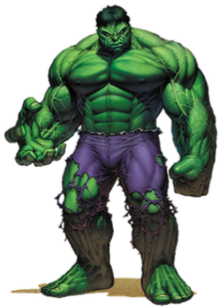
Art by Dale Keown and Peter SteigerwaldPublication information Publisher Marvel Comics First appearance The Incredible Hulk #1 (May 1962) Created by Stan Lee
Jack KirbyIn-story information Full name Species Human mutate[a] Team affiliations Avengers
Defenders
Horsemen of Apocalypse
Fantastic Four[2]
Pantheon
Warbound
S.M.A.S.H.
Secret AvengersPartnerships She-Hulk Notable aliases Joe Fixit, World-Breaker, Immortal Hulk/Devil Hulk, Jade Giant, Jade Jaws,[3] Doc Green, Guilt Hulk/Guilt, War Abilities As Bruce Banner/Doc Green:
Publication history[edit]
Concept and creation[edit]

Series history[edit]

Characterization[edit]
Fictional character biography[edit]

Personality[edit]
Identities[edit]
Bruce Banner[edit]
Hulk[edit]
Joe Fixit[edit]
Marvel

(1 background)
Business[edit]
Comics[edit]
Military[edit]
Music[edit]
Places[edit]
United States[edit]
Antarctica[edit]
Vehicles[edit]
Other uses[edit]
See also[edit]
God of War #5

(1 background)
Books[edit]
Film and television[edit]
Video games[edit]
Music[edit]
Albums[edit]
Songs[edit]
See also[edit]
God of War #4

(1 background)
Books[edit]
Film and television[edit]
Video games[edit]
Music[edit]
Albums[edit]
Songs[edit]
See also[edit]
Formula One

(3 backgrounds)

Category Open-wheel single-seater Formula auto racing Country International Inaugural season 1950 Drivers 20 Teams 10 Chassis manufacturers 10 Engine manufacturers Tyre suppliers Pirelli Drivers' champion ![]() Max Verstappen
Max Verstappen
(Red Bull Racing-Honda RBPT)Constructors' champion ![]() Red Bull Racing-Honda RBPT
Red Bull Racing-Honda RBPTOfficial website www ![]() Current season
Current seasonFormula One
History[edit]
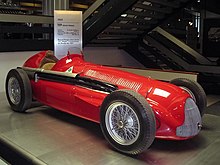
Technological developments[edit]

Big business[edit]
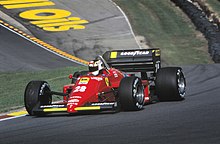
Formula 1 #2

(1 background)
DragonBall Z #2
Devil May Cry #2

(1 background)
Devil May Cry 
Genre(s) Developer(s) Publisher(s) Capcom Creator(s) Hideki Kamiya Platform(s) First release Devil May Cry
August 23, 2001Latest release Devil May Cry 5: Special Edition
November 10, 2020Games[edit]
2001 Devil May Cry 2002 2003 Devil May Cry 2 2004 2005 Devil May Cry 3: Dante's Awakening 2006 Devil May Cry 3: Dante's Awakening – Special Edition 2007 Devil May Cry (mobile) 2008 Devil May Cry (mobile) Devil May Cry 4 2009 2010 2011 2012 Devil May Cry HD Collection 2013 DmC: Devil May Cry 2014 2015 Devil May Cry 4: Special Edition 2016 2017 2018 Devil May Cry HD Collection (PS4, Xbox One, PC) 2019 Devil May Cry 5 2020 Devil May Cry 5: Special Edition 2021 2022 2023 2024 Devil May Cry: Peak of Combat 
Plot[edit]
Development[edit]
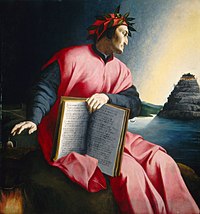
Other media[edit]
Light novels[edit]
Comics and manga[edit]
Animation[edit]
Anime[edit]
Animated series[edit]
Film[edit]
Plays[edit]
Soundtracks[edit]
In other games[edit]
